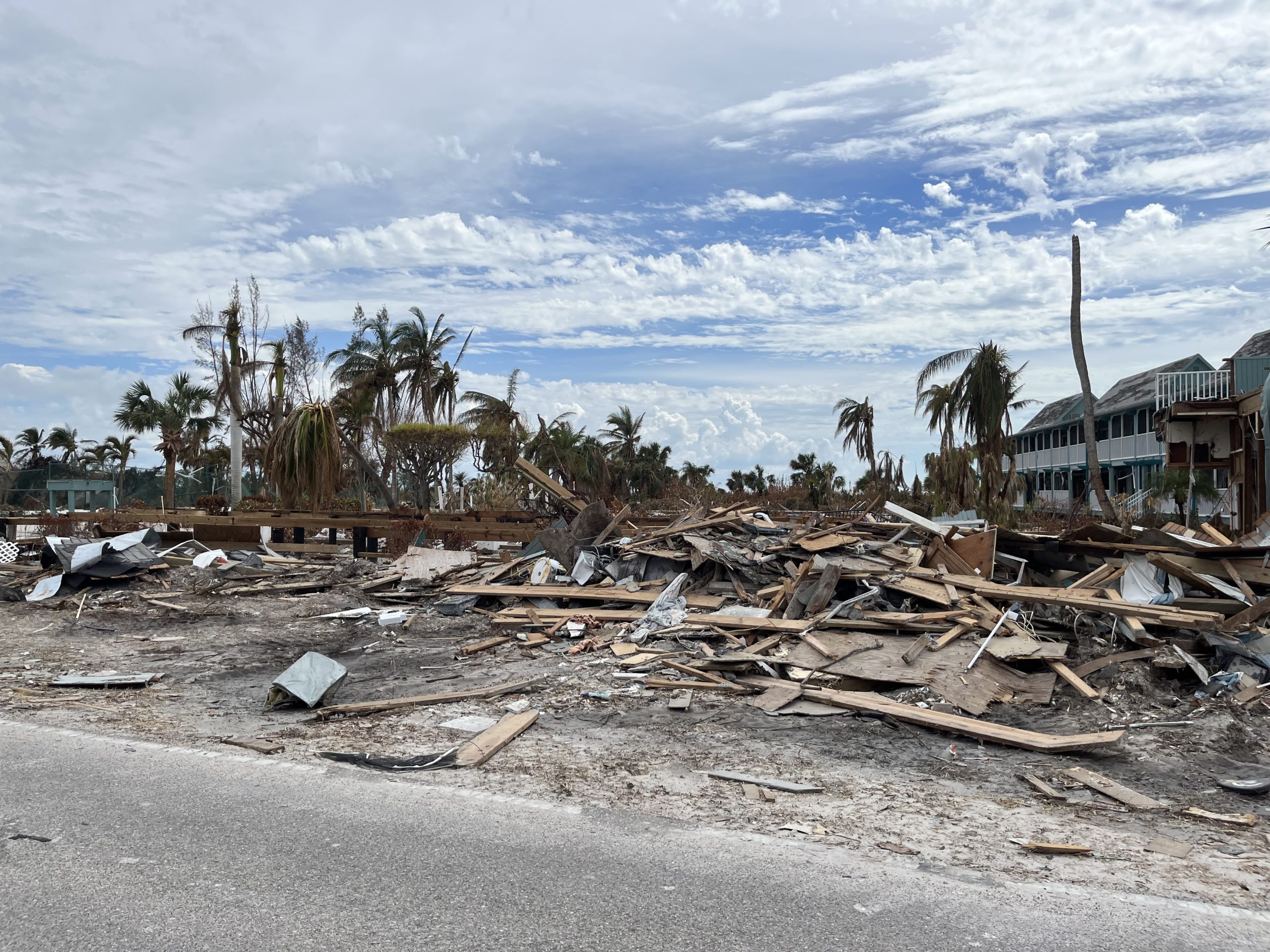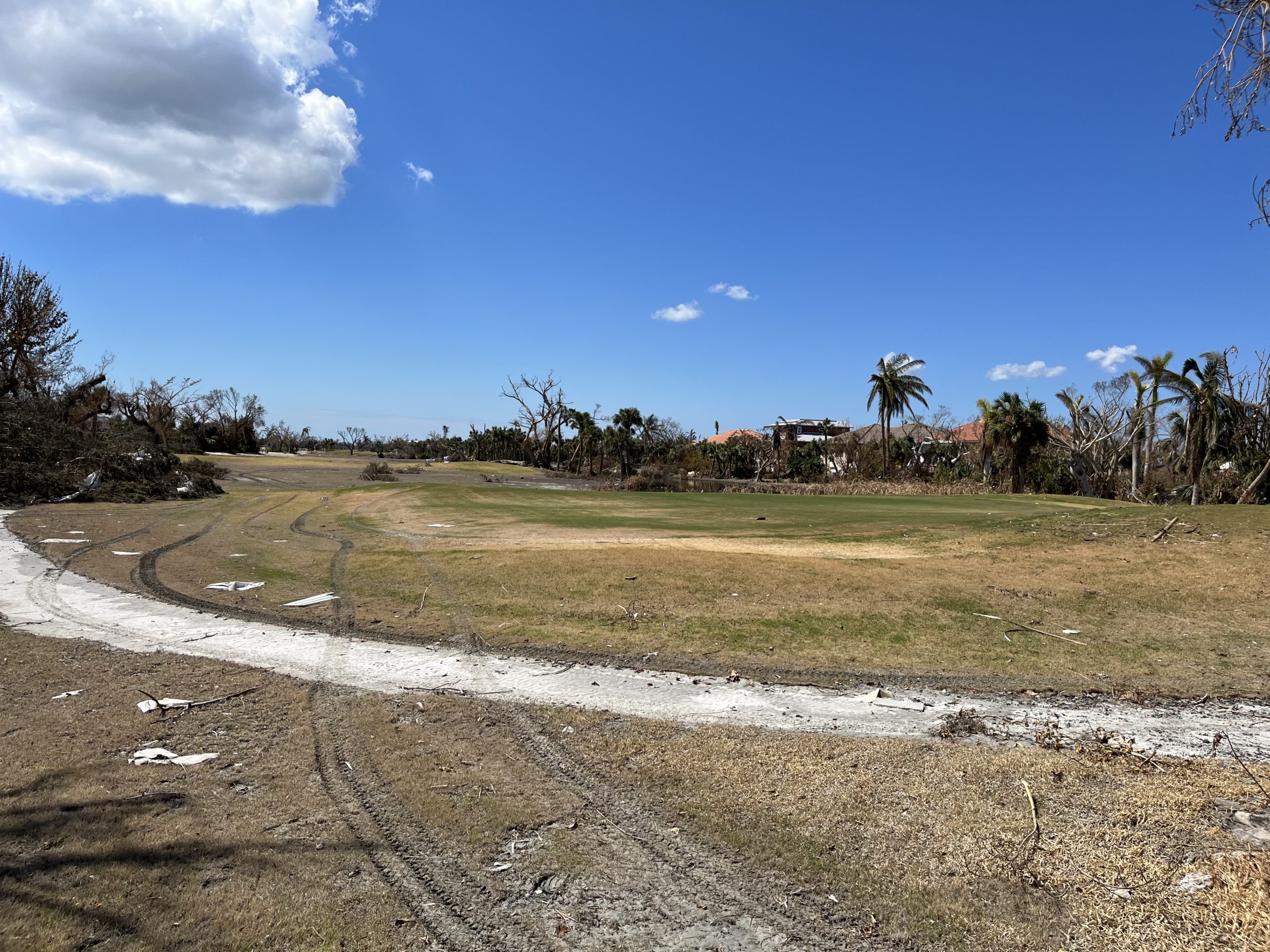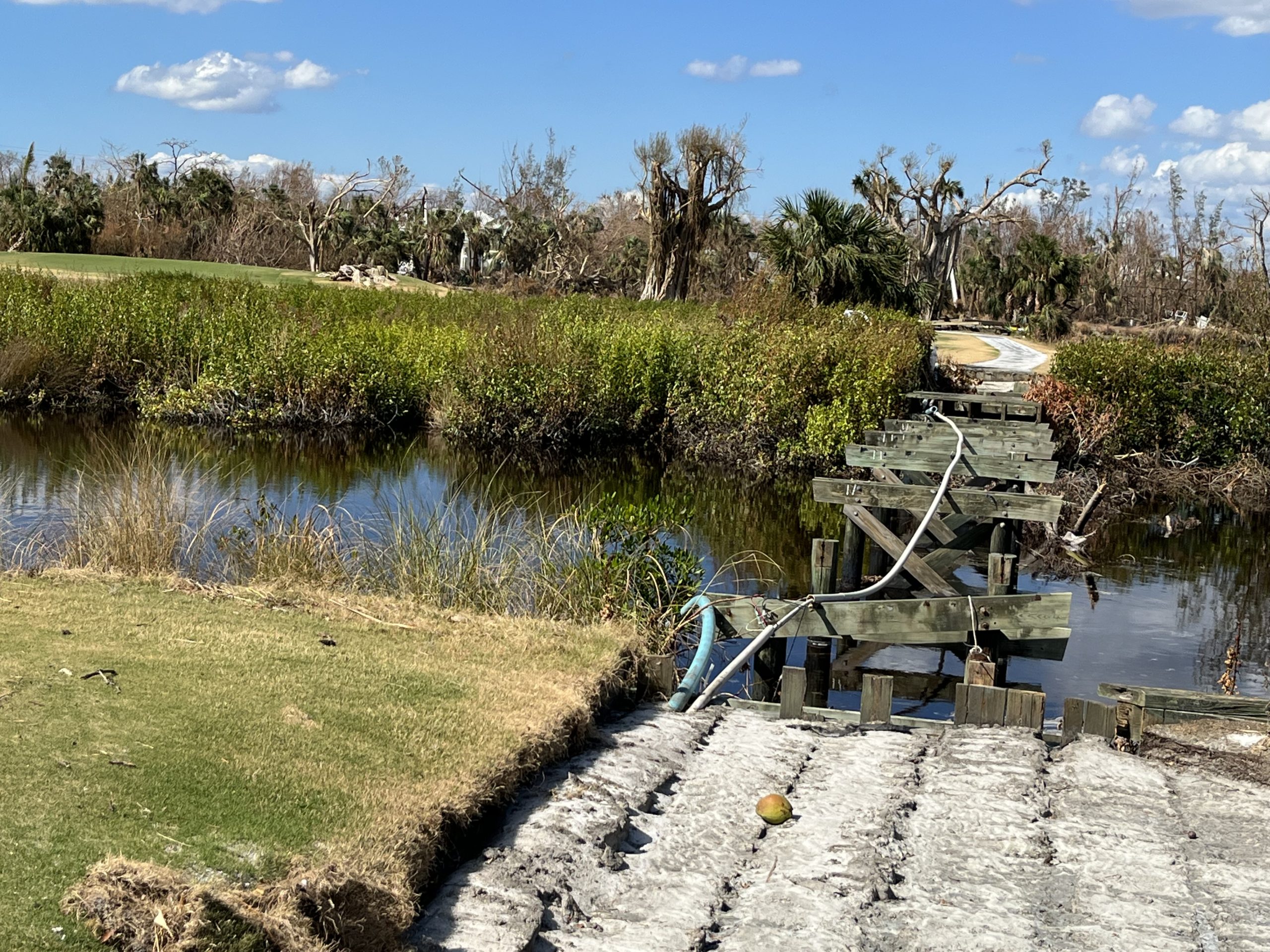As Courses, Communities Recover Post-Hurricane, Florida Rounds Could Dip

The jumbled golf cart fleet at Sanibel Island Golf Club after the storm surge receded in the wake of Hurricane Ian
Gene Taylor has deep ties to Sanibel Island, the idyllic barrier island off the southwest coast of Florida. Not only is he the head golf professional at the Sanibel Island Golf Club, but he’s also a realtor in the area as well as a homeowner. When Hurricane Ian tore across Sanibel on Sept. 28, Taylor experienced double the devastation – as both his golf facility and his house were swamped by about seven feet of water from the accompanying storm surge.
When Taylor returned to the island by boat several days after the storm, he was taken aback by the devastation. He rode around the island on an abandoned bicycle he’d found, first visiting his battered home and then the golf course about a mile away. Taylor said the experience was disorienting at times because landmarks he’d known for almost 15 years had been wiped away.
“I’ve never been in a war zone, but if I ever was, I expect that’s what it would look like: debris, destruction, trees down, vehicles abandoned,” Taylor said by phone. “There was so much water and it left behind this brown sludge on everything. There’s appliances, furniture, roofing, bikes… And it’s not just like trash on the side of the highway. It’s all mangled and tied up in the trees and branches. You saw pictures, so you kind of knew what to expect, but until you see it in person, it doesn’t hit you.”

The Surfrider resort on the east end of Sanibel Island was almost completely wiped out. (Photo: Gene Taylor)
Hurricane Ian’s impact on the southwestern coast of Florida was significant – a relatively rare direct hit from a major hurricane that came ashore with winds of 155 miles-per-hour. There were more than 100 deaths, most of those drownings from a storm surge that reached as high as 18 feet, making Ian the third-deadliest storm to hit the U.S. mainland this century. The storm, which churned across the state of Florida and then up into South Carolina, left a swath of destruction to homes and businesses, among them a host of golf courses in the nation’s top golf market.
More than 200 golf courses in Florida were hit by hurricane force winds and dozens remain closed.
“Really the closer you get to Fort Myers Beach, Sanibel, Captiva, that’s where it was catastrophic. That’s where the clubs are in our area that were impacted the most,” said David Kent, the General Manager at Crown Colony Golf & Country Club and a member of the board of directors for the Southwest chapter of the South Florida PGA. “When you move south in the Marco (Island) and Naples area, it’s those clubs that are extremely coastal that were really hard-hit. If you were a little inland, they are by and large spared even if they have a lot of clean up to do.
“The outreach from the section and all the peers has been overwhelmingly supportive and collaborative to see what anyone can do to help,” Kent added. “And the PGA swiftly started distributing funds through their hurricane relief program to those in need with very little red tape in phase one.”
For golf facilities and businesses in the areas affected by the storm, it’s the well-being of those in local communities that remain of foremost concern.
Troon, the world’s largest golf management company, had dozens of facilities impacted – the most severely being places like Del Tura Golf & Country Club in Fort Myers, Cape Royal Golf Club in Cape Coral, and Burnt Store Marina Country Club in Punta Gorda.
“All in all, we feel incredibly fortunate. It could have been so much worse for us, and that’s not to downplay that it’s been catastrophic for so many individuals,” said Bruce Glasco, Troon’s Chief Operating Officer. “We feel fortunate that every business of ours, even those most affected, will be up and operational in 45 days. Our main concern on that front is what did it do the community as a whole? There will be those affected who are loyal to local facilities. They might have had some extensive damage to their homes, have to have work done, and some people will likely move out of the market for a period of time. And there are people who will never be able to recover.”
Golf is big business in Florida (over $8 billion in annual economic impact) and the latest rounds data shows that 2022 year-to-date play in the Sunshine State was tracking 1.4% ahead of the pace from a year ago, when there were more rounds played at U.S. golf courses than ever in history. With over 1,000 golf courses in Florida impacted by the storm – some far more significantly than others – there’s bound to be a residual effect on play for at least a short window of time. That impact is hard to quantify at this point as some courses have more to overcome than others.

A number of Southwest Florida facilities suffered extensive damage due to Hurricane Ian, whether to the courses themselves or surrounding infrastructure.
“We’ve been open every single day through Covid. We were not closed one day. And now Ian is what closes us,” notes Kari Phenix, the head professional for the two municipal golf courses in the city of Fort Myers. “We’re going to be the fortunate ones, when it’s all said and done. We’ve had an unbelievable record year. There’s a part of me that takes a deep breath. We’ve been just slammed.”
The clubhouse roofs for both Fort Myers facilities were damaged while the courses had more than 250 downed trees in total. About 180 of those were at Eastwood Golf Club, which also had an on-course bathroom facility wiped out. Phenix said they were extremely fortunate in that Fort Myers Golf Club, which has a canal running through it, didn’t lose its cart fleet in the flooding and that both courses have salt water-resistant Paspalum turf unlike some others in the area with Bermuda grass that gets damaged by brackish water.
In South Carolina, the south end of Myrtle Beach got hit harder than the northern end, with a course like Pawleys Plantation, which sits on a marsh on Pawley’s Island, forced to close for several days after getting temporarily swamped by the storm surge before the waters receded.
“Relatively speaking, we made it through relatively unscathed from a golf perspective,” said Steve Mays, the President of Founders Group, which owns 21 courses and two golf package companies in the Myrtle Beach area. “The days of the event and leading up to it, business was hurt. The people who were coming into town either shortened their trip, if they were already here, moved it to the following weeks, or in some cases to the spring time. We did have cancellations, obviously, but there wasn’t a significant impact from this event.”

Washed out bridges and other damage left some Florida golf courses in major disarray after Hurricane Ian
Meanwhile, back on Sanibel Island, there’s a long road ahead. And little golf to be played anytime soon, most likely.
“The golf course, there’s only so much that can be done there,” said Taylor, the pro at the open-to-the-public Sanibel Island Golf Club. “We had no power, no running water, no sewer. There’s no irrigation. So, there’s nothing we can do for the golf course. And we have no bridge. Nobody is driving onto the island. They can haul in supplies when it is fixed but until then, it’s what you can bring in on a boat. And there’s no docks. So, you might have to go through six inches of water or 2 feet of water just to get up on the beach.
“Right now, we try not to get too far ahead of ourselves. It’s literally one day at a time.”
Short Game.
"*" indicates required fields
How can we help?
NGF Membership Concierge

"Moe"
Learn From NGF Members
 Ship Sticks Secrets to a Hassle-Free Buddies Golf Trip
Ship Sticks Secrets to a Hassle-Free Buddies Golf Trip
Whether you’re the head planner of your upcoming buddies golf trip or simply along for the ride, we’ve gathered a few easy ways to keep everyone in your group happy.
Read More... Golf Course Turf, Soil and Water Quality Diagnostic Testing
Golf Course Turf, Soil and Water Quality Diagnostic Testing
As humans, we see our primary care physician on a regular basis to proactively evaluate our vital signs. Likewise, a superintendent should perform frequent diagnostic testing on their golf course.
Read More... Unlocking Distance: Launch Conditions and Angle of Attack
Unlocking Distance: Launch Conditions and Angle of Attack
We’ve long known that higher launch and lower spin is a powerful combination for generating consistently long and straight tee shots. A key factor in optimizing launch conditions, one often overlooked, is ...
Read More...





